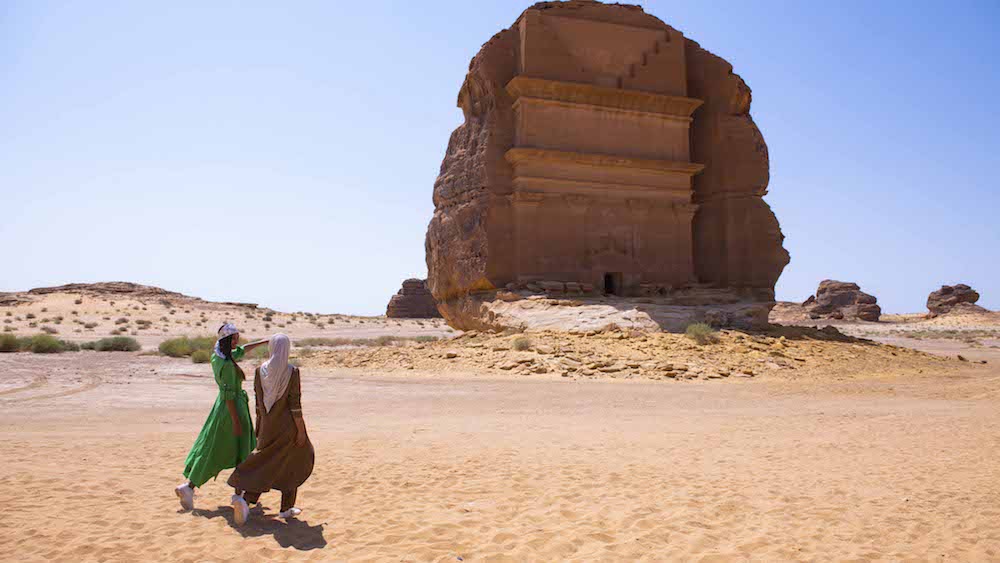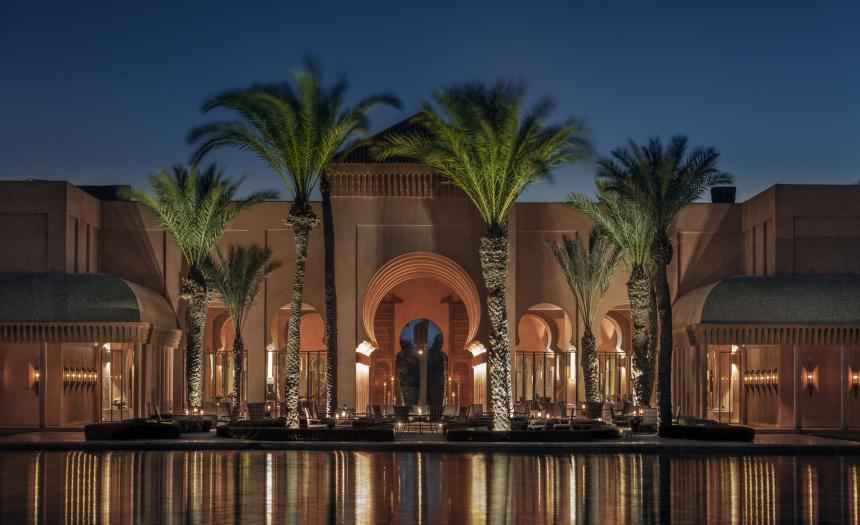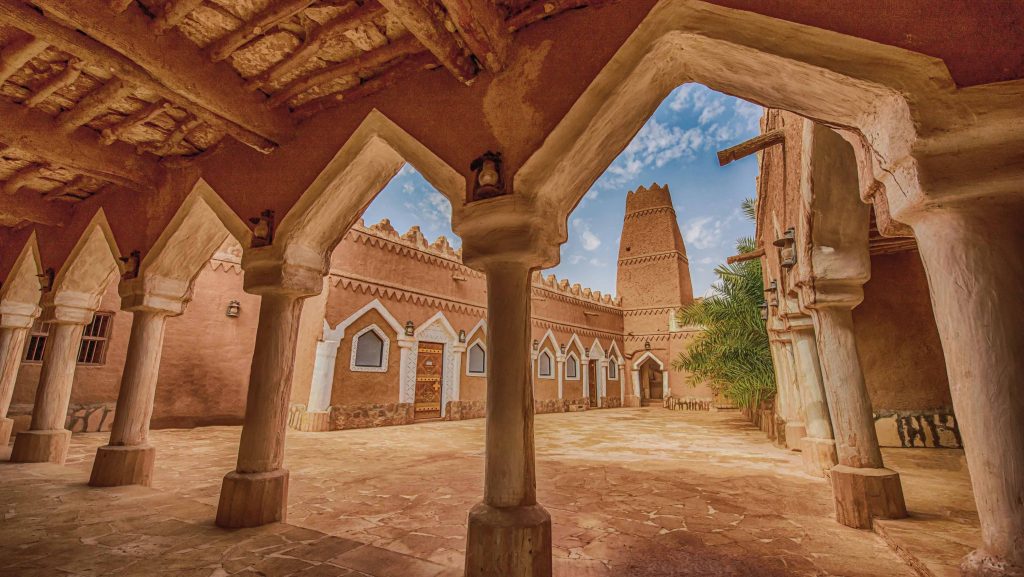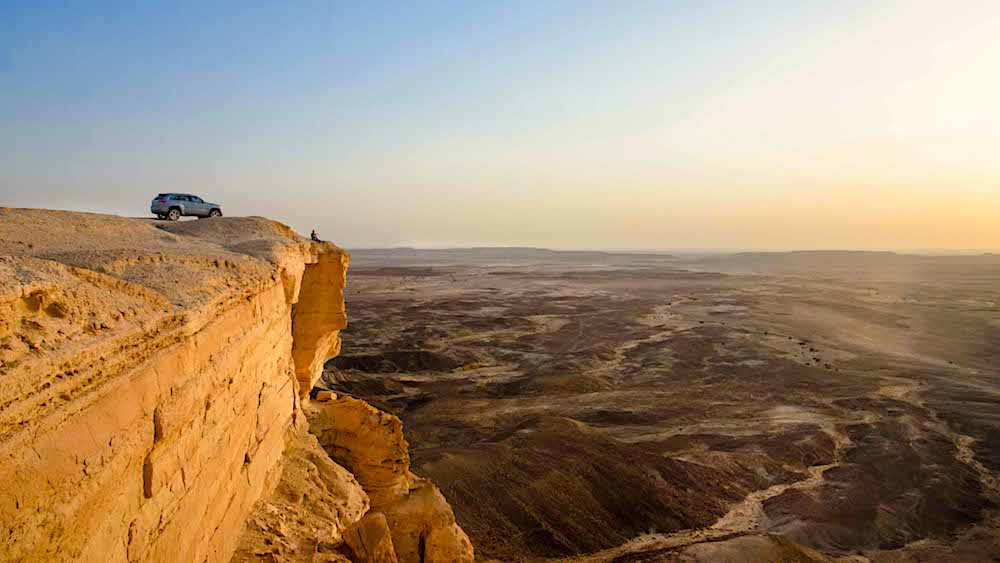Much as a woman in niqab may show her face for a flash as she adjusts the dark mask of her robes, the Kingdom of Saudi Arabia has been exposing slivers of tourism possibilities to the west and then concealing them again in a play of calculated flirtation – until now. Travelers have long held the Kingdom as a bucket destination to visit as other tourism destinations layer up in Instagram promotions and foodie tours. And, until now, Saudi Arabia has remained off limits for all but the most hardened travelers or religious pilgrams.
Those hidden days may be in the past now as those wishing to visit the inward Kingdom of Saudi Arabia no longer need to prove their ties to Islam or get special dispensation. Last month, at a historic event in Ad-Diriyah, a UNESCO World Heritage Site in Riyadh, Ahmad Al-Khateeb, Chairman of the Saudi Commission for Tourism and Heritage, announced the launch of a tourist visa program to allow those interested in visiting and seeing the kingdom a chance to do just that.
Applications for the visa can now be made at Saudi Embassies and Consulates across the world and, at the same time, citizens from 49 countries, including the United States, will also be able to apply for an e-Visa online or get a Visa on arrival into Saudi Arabia. A dedicated online portal at visitsaudi.com has been launched and electronic kiosks are available at airports.
The following are the 49 countries that will be eligible to apply for e-Visas and Visas on arrival.
| USA | Canada | Kazakhstan |
| Singapore | Brunei | New Zealand |
| South Korea | Japan | Spain |
| Belgium | Malaysia | Austria |
| Cyprus | UK | Croatia |
| Estonia | Andorra | Denmark |
| Germany | Bulgaria | France |
| Hungary | Czech Republic | Holland |
| Italy | Finland | Ireland |
| Lithuania | Greece | Liechtenstein |
| Monaco | Iceland | Malta |
| Poland | Latvia | Norway |
| Russia | Luxembourg | Romania |
| Slovenia | Montenegro | Slovakia |
| Switzerland | Portugal | Sweden |
| Australia | San Marino | Ukraine |
| China (including Hong Kong, Macau and Taiwan) | ||
The tourist visa allows for a stay in of up to three months or 90 days per entry, and is valid for one year, with multiple entries. The cost of applying for an e-Visa or a Visa on arrival is $117 plus VAT. Saudi Arabia intends to extend the e-Visa scheme to other countries in due course.
Saudi Arabia and Vision 2030
Opening Saudi Arabia to tourism is a key milestone in the implementation of Vision 2030, which seeks to diversify the country’s economy and reduce its dependence on oil. Saudi Arabia expects to achieve 100 million international and domestic overnight visits a year by 2030, attracting significant foreign and domestic investment and creating up to a million jobs. By 2030, the aim is for tourism to contribute up to 10% of the country’s GDP, compared to just 3% today.
Saudi-style Experiences
Not surprisingly, Saudi Arabia offers a plethora of (currently) unexplored heritage sites, an authentic cultural experience and breathtaking natural beauty. Places of interest include:
* Five UNESCO World Heritage Sites and a staggering 10,000 recorded sites of historical interest.
* Thirteen regions, each with a distinctive cultural history and culinary tradition.
* A contemporary culture scene that includes the King Abdulaziz Centre for World Culture in Dhahran, sculpture parks, art galleries, fashion shows, literary events and the inaugural Red Sea International Film Festival in March 2020.
* A surprisingly diverse range of landscapes, including the green mountains of Asir, the crystal waters of the Red Sea, the snow-covered winter plains of Tabuk and the shifting sands of the Empty Quarter.
* A number of new destinations under construction, including the futuristic city of NEOM, the Qiddiyah entertainment city near Riyadh and a range of luxury destinations by the Red Sea.

Saudi Arabia’s New Oil
A robust sector development strategy underpins the launch of the new tourist visa. In the first phase of the program, from 2019 to 2022, the focus will be on attracting first-time visitors to “discover Saudi.” The second phase of the program, from 2022 onwards, will focus on enticing visitors to “experience Saudi.” As part of phase one, over 20 new tourist sites will be developed, dramatically expanding choice and opportunity for visitors to discover the country’s hidden treasures.
As part of phase two, the full development of Saudi’s mega projects will come on stream, including NEOM, Amaala, the Red Sea Project, Al-Ula, Qiddiyah and Ad-Diriyah.
Underpinning Saudi’s approach are a range of enabling initiatives including:
* The development of a comprehensive legislative, licensing & inspection framework for the tourism sector.A drive to facilitate the recruitment and training of staff in sector’s key job families.
* A private sector engagement program to foster partnerships to deliver a richer and more varied visitor experience.
* The expansion of air connectivity bi-lateral agreements and the launch of new international routes to link Saudi with target countries.
“For the first time, we are opening our country to tourists from all over the world. To those thinking of visiting Saudi Arabia, you won’t find a warmer welcome anywhere in the world. And you won’t find a people prouder to share the riches of their land with you,” said Al-Khateeb. “Make no mistake, this is Vision 2030 in action. We are delivering – supercharging a non-oil sector that will drive growth and diversify our economy for decades to come.”
As Saudi Arabia, more known these days for nefarious international crimes and repressive social policies than for tourism, gets ready to open its borders to travelers and vacationers, stunning locations and attractions are putting a new sheen on ancient beacons of interest. Diriyah Gate, a sweeping 19th century adobe city that is the birthplace of the Saudi nation, will be soon unveiled as a major educational, cultural, recreational, and hospitality hub on the banks of the Hanifa valley in Diriyah, in the heart of the modern capital city of Riyadh.
“The Diriyah Gate development will serve as a gathering place in this new era of openness. Our partnerships with Greg Norman and the resort developer Aman, unveiled just this week, offer a taste of the type of unprecedented collaborations we are seeking in our mission to make Diriyah a global icon and the Arabian peninsula’s must-visit destination,” said Gerard ‘Jerry’ Inzerillo, CEO of Diriyah Gate Development Authority (DGDA) and former CEO at Forbes Travel Guide.

Saudi officials are hoping to preserve Diriyah’s history, developing the historic site into one of the world’s greatest gathering places and a hub for Saudi culture and heritage, and tourism. The Diriyah Gate Development Authority signed landmark deals with Aman, a luxury resort developer, and the Greg Norman Golf Course Design (GNGCD) Company last week to introduce the splendors of Diriyah to the world.
The boutique Aman hotel will be built in Bujairi, the lifestyle and culture hub of the Diriyah Gate megaproject. Aman resorts have upended the typical model of the hospitality industry by doing away with lobbies, bellboys, and reception desks. Aman’s Diriyah Gate property will have spectacular views over the At-Turaif UNESCO World Heritage Site. A 27-hole Wadi Safar Golf Course will be designed by the GNGCD, one of the world’s leading golf course developers, in an exclusive residential district being developed by DGDA in a verdant valley west of Riyadh.

































































































































































































































































































Get Social